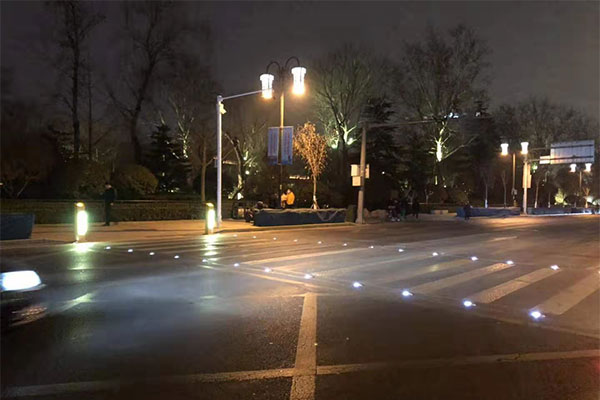Road Studs: Types and Uses
Road safety is a crucial aspect of modern-day transportation. Roads are the primary means of transport for people and goods, and safety measures have to be put in place to ensure that everyone using the roads is safe. One of the safety measures that have been implemented is the use of road studs. Road studs are essential in improving visibility on the road, especially in low light or dark conditions.

What are road studs?
Road studs, also known as pavement markers, are small, reflective devices that are installed on roads to improve visibility for drivers and pedestrians. They come in various shapes, sizes, and colors and are made of materials like plastic, ceramic, or metal. They are usually placed on the road surface, and they reflect light from headlights, making them visible even in low light conditions.
Types of Road Studs on the basis of Material used in them:
- Plastic road studs: They are the most common type of road studs. They are made of durable and impact-resistant plastic materials that can withstand the weight of heavy vehicles. They are also lightweight and easy to install, making them ideal for temporary road markings.
- Ceramic road studs: They are made of high-strength ceramic materials that are highly durable and long-lasting. They can withstand extreme weather conditions, heavy traffic, and other harsh conditions. They are also highly visible and provide excellent guidance for drivers and pedestrians.
- Aluminum road studs: They are made of high-quality aluminum materials, which are durable and corrosion-resistant, making them ideal for use in harsh outdoor environments. Aluminum road studs are a type of raised pavement marker that are commonly used on roads and highways to enhance visibility and provide guidance to drivers.
- Glass road studs: They are made of toughened glass materials that are highly durable and impact-resistant. They are highly visible and provide excellent guidance for drivers and pedestrians. Glass road studs are commonly used in pedestrian crossings and other areas where pedestrian safety is a concern.
- Solar road studs: They are road studs that use solar panels to power their lights. They are particularly useful in areas where there is no access to electricity.
Uses of road studs
Road studs are used for various purposes, including:
- Improving visibility: Road studs are primarily used to improve visibility on the road. They reflect light from the headlights of vehicles, making it easier for drivers to see the road ahead, especially in low light conditions.
- Providing guidance: Road studs are also used to provide guidance to drivers, particularly in areas where road markings are not visible, or the road layout is confusing.
- Warning drivers of hazards: Road studs are also used to warn drivers of potential hazards on the road, such as sharp bends, railway crossings, or pedestrian crossings.
- Reducing speed: Road studs are also used to reduce speed in areas where speeding is a concern. Rumble strips, for instance, are used to slow down drivers approaching dangerous areas.
Conclusion
Road studs are essential in improving road safety. They improve visibility on the road, provide guidance to drivers, warn them of potential hazards, and reduce speed in areas where speeding is a concern. As such, they are a crucial component of modern-day transportation infrastructure. Governments and road authorities should continue to invest in road studs to improve road safety and reduce accidents on the road.

